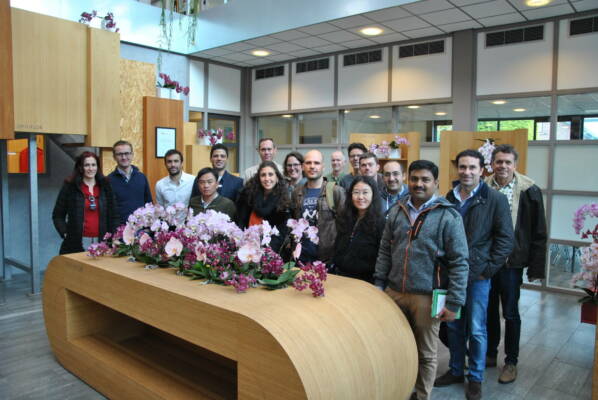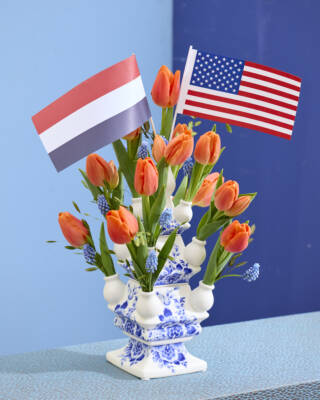LONDON, UK: The Natural History Museum has been given the go ahead from the Royal Borough of Kensington and Chelsea to transform its five-acre gardens into an exemplar of urban wildlife research, conservation and awareness – galvanising a far-reaching, national drive to reengage people with the natural world and urban biodiversity, which it warns is under threat like never before.
Leading a coalition of museums and wildlife organisations, the Natural History Museum’s Urban Nature Project will not only transform its London gardens into a biodiversity hub, but critically it will create an urban nature movement through a UK-wide learning programme for young people, families and schools. The project will develop and deliver online, onsite and national monitoring programmes and will include an onsite education centre, a range of citizen science programmes and a scientific ‘living lab’ where the Museum’s existing scientific work will continue, and deliver cutting edge research to be shared globally.
Sir David Attenborough’s powerful and poignant quote, ‘The future of the natural world, on which we all depend, is in your hands,’ will be featured in bronze lettering on the east carriage ramp outside the Museum’s main entrance.
Attenborough says: “The natural world is under threat as never before. Species that were a common sight in gardens across the country when I was young, such as hedgehogs, are rarely seen by children today. These declines have devastating consequences for wildlife. Unless children have access to nature and experience, understand and nurture wildlife, we know they might never feel connected to nature and could grow up with no interest in protecting the natural world around them.
The Urban Nature Project opens the door for young people to fall in love with the nature on their doorsteps and develop a lifelong concern for the world’s wild places. Nature isn’t just nice to have, it’s the linchpin of our very existence and ventures like the Urban Nature Project help the next generation develop the strong connection with nature that is needed to protect it.”
The project, which has seen scientists from the Museum come together with experts in the field over several years of planning, is due for completion in 2023. Primarily designed as a response to the urgent need to both monitor and record changes to the UK’s urban nature and fill the urgent skills gap required to do so, the Urban Nature Project is a transformational project that will not only galvanise people to reengage with the nature on their doorsteps, but also build on the Museum’s scientific and public work and trigger a movement that will ultimately help to safeguard nature’s future.
The project will focus on engaging diverse audiences that are least likely or able to access nature, and aims to help people from across the UK form a lifelong connection with the natural world, learn about its value and inform and empower people to understand and protect it. This includes increasing volunteer opportunities threefold via an outreach programme to neighbouring and diverse boroughs and the creation of a youth panel which has been selected with the help of partners including Voyage Youth, Gendered Intelligence, Musawa BME Community Consortium, Young Women’s Trust and A Focus on Nature.
Clare Matterson, the Natural History Museum’s Executive Director of Engagement says: “At a time when people have spent most of the year social distancing at home, the nature on our doorsteps takes on ever greater appreciation and importance. But it is under threat like never before; we have suffered decades of decline in the abundance and distribution of many UK species, and in urban areas especially, we urgently need to learn more about how to mitigate pressing environmental challenges such as climate change and biodiversity loss. By 2030, nine of out ten of us will live in urban areas, meaning nature is quite literally backed into a corner as concrete cities expand.
“We hope the Urban Nature Project will not only galvanise people to reengage with the nature on their doorsteps, but building on the Museum’s scientific and public work, we want to trigger a movement that will ultimately help reverse these declines.”
The new gardens will be a fully accessible green space and biodiversity hub in the heart of the capital. Museum scientists and external experts are working together to sensitively develop a project that will both protect and increase the biodiversity currently established. In just one acre of the five on site, examples of woodland, grassland, scrub, heath, fen, aquatic, reedbed, hedgerow and urban UK habitat can all be found – under these new plans these habitats will be increased and extended. Around 3,400 species have been recorded in the existing Wildlife Garden over the years, some of them for the first time, and each Autumn it is also home to three Greyface Dartmoor sheep, who play an integral role in sustainably managing the garden.
When complete, the Museum gardens will take people on a journey through a changing world. They will provide a fully accessible opportunity for visitors to connect with nature and explore the incredible diversity of life on Earth. A brand-new cast of Dippy, the Natural History Museum’s iconic diplodocus, will have pride of place. This Dippy will overlook the new east gardens which will tell the story of the Earth’s history. With plants and fossils reflecting each geological era, visitors will appreciate – visually – how old our planet is and learn about the profound impact humans have caused in a short space of time.
The west gardens will be a ‘model’ for urban nature, with different habitats showcasing the biodiversity that can be found in the UK’s urban spaces. Featuring an outdoor learning centre, the west garden will be the platform for the Museum’s national programme with activities aimed at multiple audiences.
The South Kensington gardens will also host a living lab where scientists, volunteers and the public can study the changes in urban nature and share this research across a network of national partners. It will create an exemplar for sustainable urban nature and a space where a broad and diverse audience can engage in year-round learning programmes, outside in nature.
Leading the transformation of the Museum gardens is architectural studio Feilden Fowles, who are working with landscape architects J & L Gibbons on the ambitious project. Architectural drawings the team has developed for the project have this month been accepted by the Royal Academy as part of their Winter Exhibition, famous for showcasing the art of the moment to the nation and sitting alongside exhibits from the likes to Tracey Emin and Ai Weiwei.






































